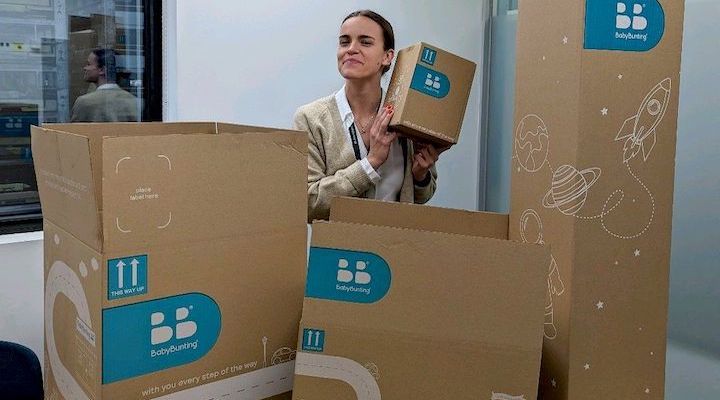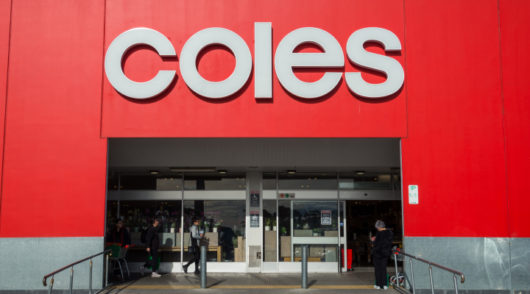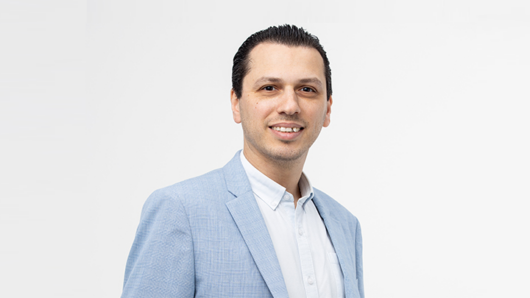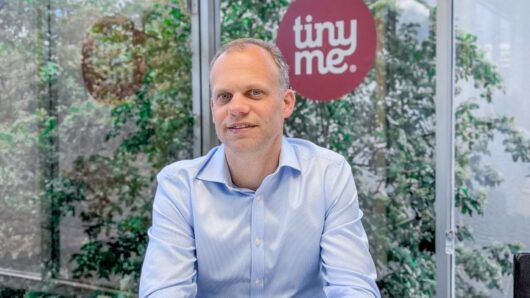Usually – and especially for consumers shopping online – the first physical impression someone has of your brand is when they see it in its packaging.
“So it’s vital to make that experience count,” explains Alexandria Jurcic, national marketing manager, at Australian corrugated cardboard and packaging specialist Abbe. “It is important to use your packaging for the advantage of your brand and brand messaging. By making it visually appealing, it stands out from your competitors’ products and catches the consumer’s eye, making them more likely to purchase.”
Jurcic highlights the unboxing experience as an enormous opportunity for brands to use packaging to their advantage. Over the past few years, there has been a dramatic increase in live streamers and individuals alike recording or broadcasting the unboxing experience of online purchases and sharing the excitement of their purchase on social media.
“It is really important that when customers receive a product bought online that it looks appealing, that they get that feeling of confirmation, that they have made the right purchase decision and don’t have any after-purchase regret. Then as they unwrap it, it is not only the immediate customer who is seeing your brand, it is all the people watching the video or the stream as well.
“So this is an incredibly valuable opportunity to wow people. Get it right, and it is effectively free advertising that money cannot buy.”
Abbe has multiple manufacturing facilities in Victoria and NSW. A key part of Abbe’s team is its in-house design crew that works to help bring clients’ brands to life, helping companies create packaging for all industries and products
With consumers moving away from plastic for sustainability reasons, companies in the retail sector and other categories are switching to cardboard packaging to demonstrate environmental awareness – and maintain a ‘wow’ factor on store shelves. Jurcic counsels that the way goods are delivered to stores and displayed on shelves in boxes should be an important component of your brand’s overall marketing strategy.
“If you consider candles, for example, or homewares gift sets, they are often stocked on shelves in boxes. If they are packed in nice boxes which make them look and feel more expensive, people are more likely to be receptive, especially for gifting.”
Sustainability is a key driver
Due to its abundance – coming from renewable resources and its ease of recycling – corrugated cardboard is recognised as the world’s most sustainable packaging material. Jurcic says that through existing infrastructure, the paper used in corrugated cardboard can be recycled up to seven times.
But Jurcic cautions that adopting it as a sustainable solution is not enough – brands need to make sure they clearly display the carton’s sustainability credentials in their on-package artwork, with confirmation the packaging is suitable for recycling.
“Sustainability is a massive thing for most people these days, especially among Gen Z consumers who are far more likely to reach for something that says it’s got sustainable packaging as opposed to something that doesn’t. This is where we can develop a commercial advantage with our packaging design.”
As part of the sustainability quest, Jurcic has observed younger startup businesses are often opting for a “raw kraft look” for their packaging to help convey a recyclable, sustainable feel. Kraft paper or paperboard produced is made from chemical pulp and has a natural appearance. “If you infuse that kraft look into the design, people associate your brand with sustainability.”
For Abbe, the commitment to sustainability extends beyond just cardboard. For example, the company advises clients to print information directly onto cartons rather than decals which – due to the adhesives – can sometimes render the cartons unrecyclable. There are multiple print options available for Abbe customers, including Digital printing, Lithographic printing and Flexographic printing, each with its unique benefits.
“Sometimes putting a sticker on a box might be easier, but having a fully printed carton looks more polished, so we advocate including all of the company information as part of the packaging artwork.”
Adding value through repurposing
Another recent trend in packaging that is gaining pace is creating ways for consumers to repurpose product packaging rather than just dropping it into recycling bins.
Abbe is working with companies to help them create secondary uses for cardboard packaging. One such client is Baby Bunting for which Abbe has designed artwork on the exterior which kids can colour in or create posters or wall-mounted pictures. Jurcic says educational content, like the alphabet, has been incorporated too.
“Often young children prefer the box to what’s inside it anyway, so it gives them an extra dynamic and something to do with the carton.”
Another example is providing instructions and cutting lines to create things from the used cardboard, such as a mobile phone stand, a pen holder or a storage solution.
Abbe’s team has incorporated an Advent Calendar into the packaging for a beverage company client. Live streamers caught onto the concept and the product went viral on social media creating huge demand for the product.
“It’s all about finding a reason to use it for something else. Often it depends on the type of brand or the type of product, but there are different ways to repurpose the packaging in such a way that the brand is visible on the person’s shelf for a long time and becomes a reminder.”
It’s not just about branding
Jurcic explains that the benefits of carefully designed corrugated cardboard packaging extend beyond the branding opportunity and sustainability. Structure and compliance are equally important. In Abbe’s case, the company has packaging technologists on board who know how to ensure structural rigidity when shipping – and the company works closely with the likes of Woolworths, Coles and other major retailers so they can help advise clients on requirements for retailers’ warehousing and supply-chain processes.
“We understand industry requirements around packaging. It can be quite complex with so many factors to take into consideration such as print design, cardboard structure, sizing and stacking configurations, along with climate considerations. If a company is looking to get into Coles or Woolworths, for example, we know what they would need from a packaging perspective to make sure that products get stocked on shelves. Our design team is across all of that, so they will convey suggestions and recommendations back to the customer so that we are helping with the whole packaging journey, and become their packaging partner, not just their packaging supplier.”
Structural integrity is important, too – ensuring the boxes and the products inside are not going to break in transit. That dovetails with sustainability as well, she says.
“If we get the packaging right from the start, then structurally, the product is safe, and the company does not end up having to remake a product or miss a deadline or product launch. Right-sized packaging reduces product damage which itself results in lower rates of returned goods. Through the use of our right-size packaging automation machinery, smart packaging design can also eliminate wasteful void-fill – eliminating the need for clients to waste operation and delivery costs ‘shipping air’ while increasing labour efficiency, and providing faster speed to market due to reduced handling and processes.”
All these points enhance the overall customer experience, says Jurcic, who is confident that corrugated cardboard packaging will have an increasingly significant role in Australia’s retailing and FMCG industries.
“Cardboard packaging in general is on the rise – in many cases because companies see it as a sustainable product. Research shows that paperboard – corrugated, folding cartons, and liquid paperboard – remains the largest material segment, accounting for 31.8 per cent of the global value of packaging materials last year: US$373.8 billion. The segment is set to grow at a 4.2 per cent CAGR through 2028.
“It’s not going anywhere.”
- To learn more about how Abbe can help make your packaging journey easy, leave your details and one of our packaging specialists will be in touch.






